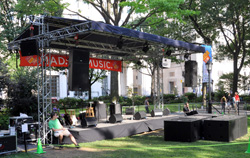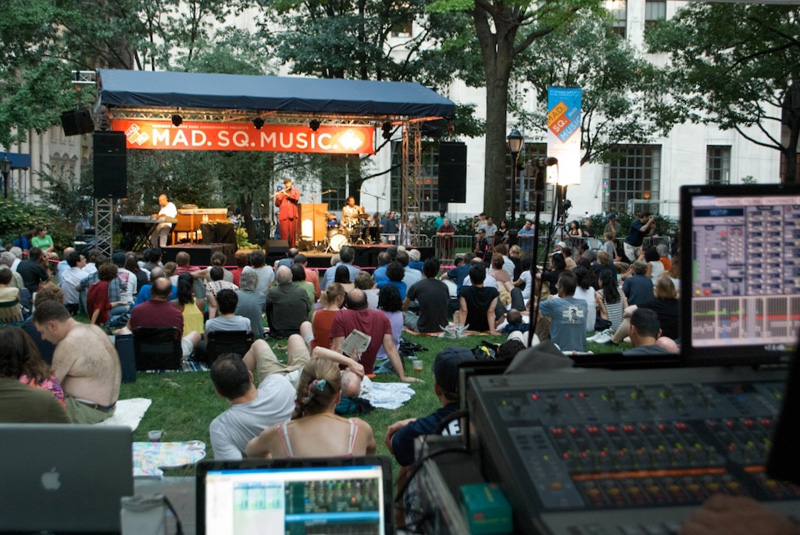
The intention of the system, in service to SIA’s stated ethic, is to provide a good experience for both artists and audience.
“Acoustically, the VQ horn has exceptional off-axis performance. That was what sparked our interest initially. When you go to the side the tonality doesn’t change; the top end just rolls off smoothly.”
It’s not a totally different experience for audience members, including many who aren’t watching the show from directly on axis. The transition between various areas also needs to be fluid from a mixing standpoint.
“If the FOH system has poor off-axis behavior, you will have energy spilling onto the stage that will cause feed back and make the artist feel uncomfortable.”
To obtain maximum low frequency cancellation on stage, four VNET 218DR and one VNET 218DR LIVE subs are configured on the ground in front of the stage in an “expanded cardioid” configuration.
The system also incorporates nine VNET 12HP loudspeakers – One as a rear fill for the walkway behind the stage and eight as onstage monitors. “The requirements for a stage monitor are the same as for a front-of-house loudspeaker: smooth off-axis response, for the musician’s comfort and feedback stability.”
“If they move to the side and the loudspeaker has a radically different response it’s going to be a problem.” The open stage and rear fill allow passersby not only a view of what’s going on, but an idea of how the show actually sounds, as opposed to the kind of random sonic clutter typically heard when standing backstage at an outdoor show.
At front of house two Tannoy VQNET 100 loudspeakers are coupled with two VQNET MB subs opposite the horn, one array per side. “We worked with Tannoy, utilizing GLL loudspeaker data and prediction tools to develop the processing parameters necessary to integrate the MB and VQmodules.”
“This provides improved low-mid pattern control below the horn cutoff, preserving a consistent tonality for even those sitting very close to the stage” Shulman explains.
Although the venue presents some challenges, they’re a part of what makes the park and this series so unique. The size of the Oval Lawn is substantial and the concerts are popular enough to routinely fill it. “We don’t want the experience to be compromised.
The expectations are for high-level production, despite the fact that we have an unusually high noise floor and cannot have enormous arrays or delay speakers.
This is right on Madison Avenue, where all the M-series buses originate and sit idling.
Doing shows, often with acoustic instruments, and having open microphones in that environment has its challenges. Your dynamic range is vastly less than what it would be in a controlled ambient noise environment.”
With all the traffic, sirens and bustle of daily life around the park, Shulman needed a system that provided adequate directivity to cover the 175 foot-long lawn without blowing away listeners up front.
“The horn does a good job of that in the mid and upper frequencies, but it’s not of a physical size to control the longer wavelengths. So we added another set of the MB’s on the other side of the horn to continue that pattern control for several more octaves.”
“In this sort of uncontrolled environment, it’s very difficult to determine crossover settings, so we used Tannoy’s directivity data to see, virtually, what different combinations of processing would yield, and determined the best solution long before the first performance.”

